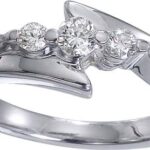Beauty care is big business. Millions of men and women from all over the world regularly buy cosmetic products, including hair dyes, make-up and moisturisers. In the UK, many people visit beauty salons for expert treatment. Waxes, dyes, haircuts, tanning, tattoos and manicures are common procedures. Unfortunately, some people suffer injuries or illnesses when visiting beauty salons.
What Could Go Wrong?
The assumption that beauticians know what they are doing can be false. Though standards are generally good in the UK, training is not regulated directly. Beauty salons are subject to three main statutes: Health and Safety at Work etc. Act 1974 (HASAW); Management of Health and Safety at Work Regulations 1999 (MHSW); and Control of Substances Hazardous to Health Regulations 2002 (COSHH).
Salons should also comply with regulations pertaining to electrical hazards, hairdressing, ultraviolet (UV) tanning, piercings and tattoos. Knowledge of substances that are known to cause dermatitis or any other type of medical condition or allergic reaction is also desirable, but how many beauticians study health and safety to any great extent?
Some people who visit beauty salons suffer from allergic reactions. Very often such reactions are caused by an allergy to a chemical called p-Phenylendiamine (PPD), which is used in hair dyes and sometimes black henna tattoos to permanently or semi-permanently bond the die. Reactions to PPD can be fatal. Hair dyes containing PPD are not banned in the UK, but experts have called for the use of the chemical to be restricted. Black henna tattoos containing PPD have been known to cause serious scarring, while some people have died after suffering allergic reactions to PPD in hair dyes.

Accident and Emergency: Beauty Care Legal Advice
Patch Test
Beauticians should look after their customers by carrying out a patch test within 48 hours of the booking for a tattoo or hair colouring. A patch test indicates whether the person may be allergic to a chemical contained in the dye. As only a small area of the skin (usually on the arm) is used in a patch test, the customer is unlikely to suffer any ill effect from this test. Beauty salons that fail to carry out this test leave themselves exposed to legal action should a treatment cause a reaction, although, it should be noted that allergies can arise spontaneously.
COSHH
Beauty salons must also adhere to COSHH when dealing with chemicals that can cause harm. Such chemicals might include hair dyes, inks, nail varnish, nail-varnish remover, lotions and disinfectants. Exposing customers to potentially harmful substances can result in severe legal consequences. Not only can those injured seek personal injury compensation, but the Health and Safety Executive would likely prosecute the salon for breaching regulations.
Jewellery items can also cause harm. Beauty salons must be registered with the local council to carry out piercings, which are subject to additional health and safety laws. All equipment – not just that used for skin piercings – must be adequately sterilised or disinfected using autoclaves, bleach or ammonia. Handling of chemical disinfectants must comply with COSHH.
Other Risks
Beauty salons might be prosecuted or accused of negligence if they fail to provide eye equipment for people who use UV tanning beds, which can cause cataracts. UV tanning has also been linked to skin cancer, so operators must implement adequate measures to control how much and how often people use the beds.
Surprisingly, electrical faults are one of the main hazards in beauty salons. This is why all equipment must be regularly maintained and inspected by a competent individual.




